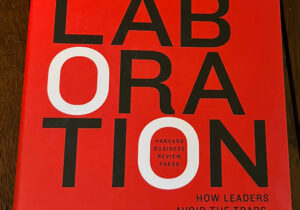Digital Branding that Beats Social Media Algorithms

Using social media for science communication can both inform and influence the public. Misinformation takes hold in the absence of researchers sharing their knowledge, but effective social media can persuade people who haven’t already hardened their views on the latest scientific issue. Branding yourself online can also build your professional network, boosting your research and career.
Digital branding can be difficult, however, because social media posts must beat the algorithms that Facebook, Twitter, LinkedIn, and other platforms use to recommend posts to users. The major social media platforms want people and organizations to pay for promoting their posts rather than “go viral” on their own.
The platforms also hope users stay glued to their feeds because they sell users’ attention to advertisers. Posting a brief introduction to a link that takes users off-platform does not serve the platform’s business model. Thus, their algorithms are much less likely to surface posts with external links in users’ feeds. If you feel like you’re shouting into a void when you post a link to your work, it’s because you are!
To overcome the algorithm, use “threads” and a “one-to-one” approach to social media.
Use Threads to Beat Social Media Algorithms
I always thought threads were simply a way to get around Twitter’s character limit. It turns out that Twitter threads drive exponential engagement compared to single tweets with external links. Threads keep people on Twitter longer, so Twitter rewards threads by surfacing them in users’ feeds.
Many successful bloggers advise creating Twitter threads. Nathan Barry, for example, observed:
Okay, so I got a crazy response last week from The Billion Dollar Blog article last week. One interesting insight is how well the Twitter thread did compared to the original post.
- Link post: 20 retweets, 10 replies
- Twitter thread: 600+ retweets, 75+ replies
One random stat, Twitter says that only 14 people followed me directly from the thread … but my follower count increased by 1,000 in the 24 hours after the thread went live. My takeaway: write Twitter threads that summarize your best articles, then link to the article at the end.
I applied Barry’s advice to Facebook and LinkedIn, too. Compared to my regular Tweets and Facebook and LinkedIn posts, my threads receive many more views, “likes,” and other engagement. Until I learned that the algorithm suppresses tweets with external links, I always thought lack of engagement was a problem with my content, low follower count, or both.
How to Create Threads on Twitter, Facebook, and LinkedIn
Creating a thread on Twitter is super-easy because it’s built for them. Facebook isn’t built for them, but you can still create threads pretty easily. LinkedIn threads are a mess but work okay.
To create a thread on Twitter, write your first tweet and click the “plus” icon to add more tweets. If you want to edit the first tweet, just click on it and start typing. You can add images, GIFs, and texts to any tweet in the thread. Once you’re finished, click “Tweet all,” and each tweet will post simultaneously and in order.
Generally, threads are labeled with “thread,” “THREAD,” or a spool of thread emoji, and they are numbered. Sometimes people only number them. Include external links in the last tweet in the thread.
To create a thread on Facebook, comment on your own post. Divide the content like you’re writing on Twitter. Facebook loves when posts receive tons of comments, even if some of them belong to you. When others comment, the post receives an even bigger bonus in the algorithm.
Don’t worry about labeling the post as a thread since threads aren’t common on Facebook. Include any external link in the most recent, or top-most, comment so that it appears to users even if they don’t click on the post. You could also mention in the original post that you include a link in the comments.
To create a thread on LinkedIn, comment on your own post. Since the comments won’t occur in sequential order, write each comment so that it relates to the post but also stands on its own. LinkedIn rewards posts based on engagement, meaning posts with comments will be surfaced in other users’ feeds even if you wrote the comments and they occur in an illogical order.
Like Facebook, LinkedIn threads aren’t common, so you don’t need to label them. You should probably say something in the original post about an external link being in the comments.
Social Media Is One-to-One, Not One-to-Many
We think of social media as communicating “one-to-many.” We hope to “go viral” with a tweet that receives hundreds of thousands of “likes” and a Facebook post reshared millions of times.
But this is a mistake for two reasons. First, one is unlikely to go viral unless one already has a large following. Second, viewing social media as “one-to-many” communication prevents us from realizing its power as a “one-to-one” communication tool.
When I reply to someone with tens of thousands of followers, such as a news organization, the reply often garners many times more retweets and “likes” than even my threads. Such a large number of people view the original tweet and its replies that many people inevitably see my reply. Communicating “one-to-one” (in a sense) pulls in more of the “many.”
If I reply to someone with follower numbers in the hundreds or low thousands, it’s not uncommon to get a “like” from the person and even a retweet or a direct response. You can praise the content of someone’s post, extend the post’s thinking, share new research relevant to the post’s topic, or ask questions and request resources. You may not receive any response, but if you do, then you’re building your brand awareness and making a connection.
Engage like that often enough, and you can build online connections with several people with larger followings. If you target your engagement, then those people will share your discipline and perhaps your specific research interests. They will become aware of you and your work, potentially become more receptive to interactions with you, and possibly share your posts because they “know” you and have interest in your research.
As your online connections share your posts, your content’s reach will extend across several social media profiles and their followings. The algorithm will love you and help build your digital brand for you.
Conclusion
Digital branding involves art and science. Translating science for the public, or even one’s disciplinary peers, requires some art. Creating compelling social media content demands art. But beating the algorithms that limit your content’s reach uses more science.
Creating threads on Twitter and even Facebook and LinkedIn will feed the algorithms the native content they crave, increasing the likelihood of surfacing for users’ attention. Communicating “one-to-one” can raise awareness of your digital brand, create valuable professional connections, and generate organic “one-to-many” communication.
With time and practice, you can build a recognizable brand on social media that benefits the public, your research, and your career.
If you learned from this article, I think you’ll also enjoy:
Use Schema to Stop the Audience’s Scroll
5 Authors Who Turn Twitter Followers into Fans
Follow me @eric_sentell and ericsentell.medium.com.
More Resources
Professional Success in Social Media
Home Page ImageCreator: Dole777
Source: https://unsplash.com/photos/EQSPI11rf68





0 Comments